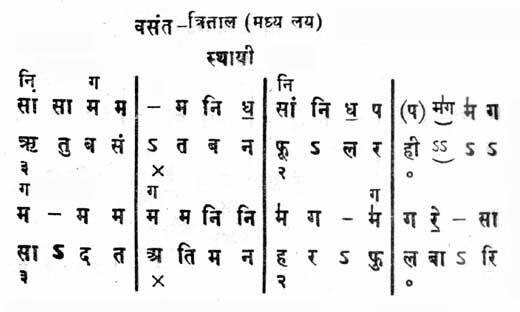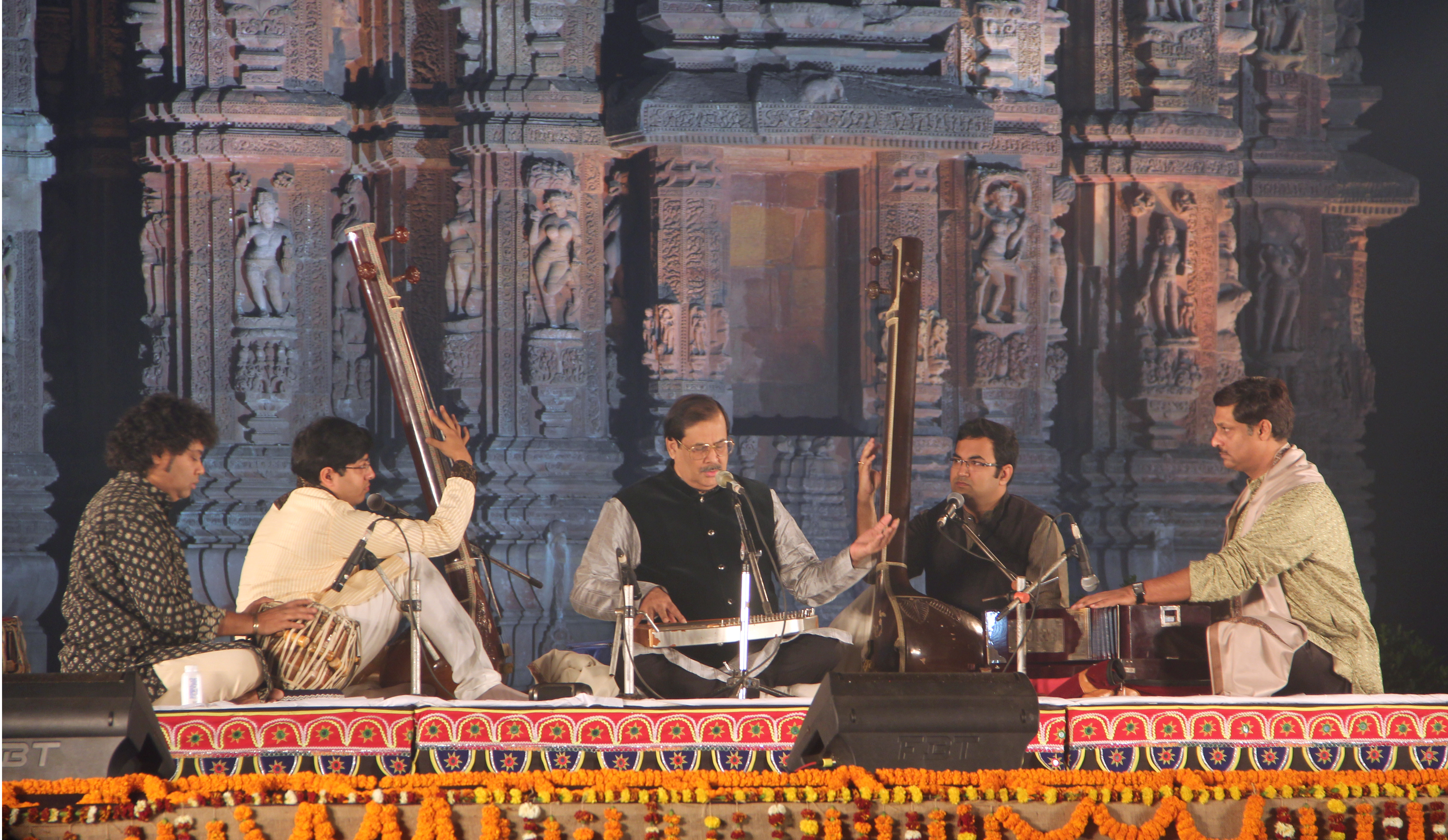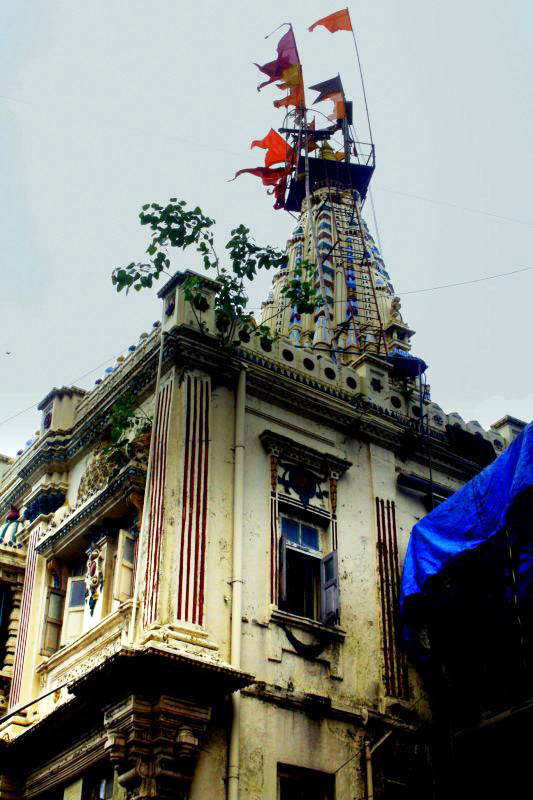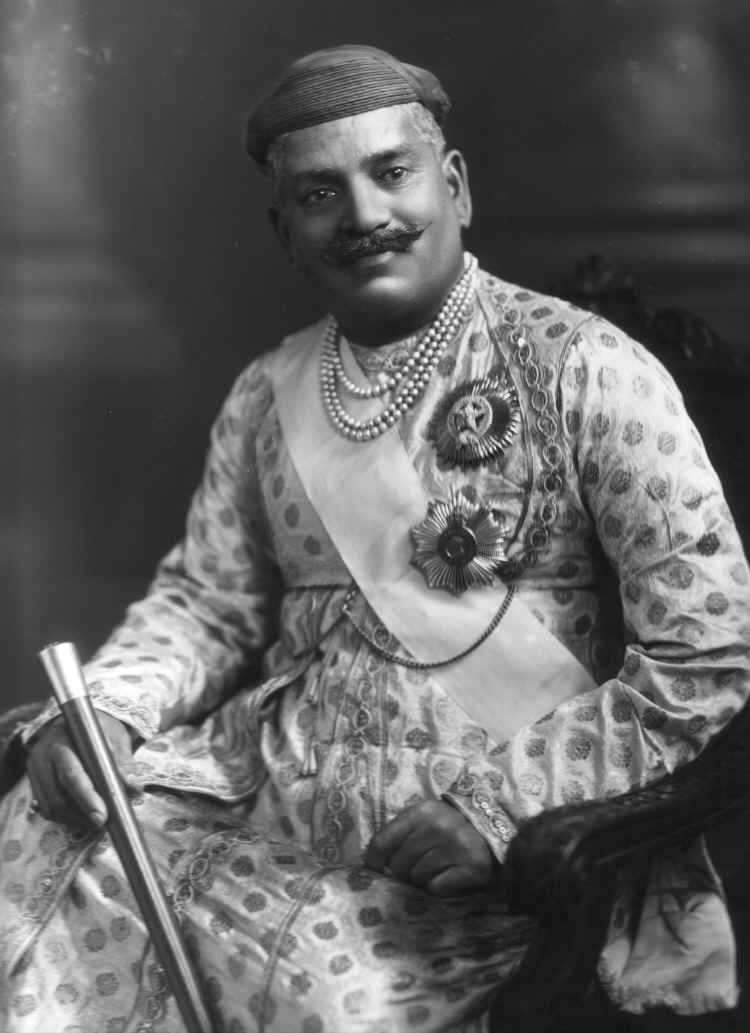|
Bhatkhande
Pandit Vishnu Narayan Bhatkhande (10 August 1860 – 19 September 1936) was an Indian musicologist who wrote the first modern treatise on Hindustani classical music, an art which had been propagated for centuries mostly through oral traditions. During those earlier times, the art had undergone several changes, rendering the raga ''grammar'' documented in scant old outdated texts. Ragas used to be classified into Raga (male), Ragini (female), and Putra (children). Bhatkhande reclassified them into the currently used thaat system. He noted that several ragas did not conform to their description in ancient Sanskrit texts. He explained the ragas in an easy-to-understand language and composed several ''bandishes'' which explained the grammar of the ragas. Early life Pandit Vishnu Narayan Bhatkhande was born on 10 August 1860 in Walkeshwar, Bombay. While not a professional musician himself, his father, who worked for an affluent businessman, ensured that Vishnu Narayan and his siblin ... [...More Info...] [...Related Items...] OR: [Wikipedia] [Google] [Baidu] |
Thaat
A Thaat () is a "Parent scale" in North Indian or Hindustani music. It is the Hindustani equivalent of the term '' Melakartha raga'' of Carnatic Music. The concept of the ''thaat'' is not exactly equivalent to the western musical scale because the primary function of a ''thaat'' is not as a tool for music composition, but rather as a basis for classification of ragas. There is not necessarily strict compliance between a raga and its parent ''thaat''; a raga said to 'belong' to a certain ''thaat'' need not allow all the notes of the ''thaat'', and might allow other notes. ''Thaats'' are generally accepted to be heptatonic by definition. The term ''thaat'' is also used to refer to the frets of stringed instruments like the sitar and the veena. It is also used to denote the posture adopted by a Kathak dancer at the beginning of their performance. History The modern ''thaat'' system was created by Vishnu Narayan Bhatkhande (1860–1936), an influential musicologist in the field ... [...More Info...] [...Related Items...] OR: [Wikipedia] [Google] [Baidu] |
Hindustani Classical Music
Hindustani classical music is the classical music of northern regions of the Indian subcontinent. It may also be called North Indian classical music or, in Hindustani, ''shastriya sangeet'' (). It is played in instruments like the violin, sitar and sarod. Its origins from the 12th century CE, when it diverged from Carnatic music, the classical tradition in South India. Hindustani classical music arose in the Ganga-Jamuni Tehzeeb, a period of great influence of Perso-Arabic arts in the subcontinent, especially the Northern parts. This music combines the Indian classical music tradition with Perso-Arab musical knowledge, resulting in a unique tradition of gharana system of music education. History Around the 12th century, Hindustani classical music diverged from what eventually came to be identified as Carnatic classical music.The central notion in both systems is that of a melodic musical mode or ''raga'', sung to a rhythmic cycle or ''tala''. It is melodic music, wi ... [...More Info...] [...Related Items...] OR: [Wikipedia] [Google] [Baidu] |
Khayal
Khyal or Khayal (ख़याल / خیال) is a major form of Hindustani classical music in the Indian subcontinent. Its name comes from a Persian/Arabic word meaning "imagination". Khyal is associated with romantic poetry, and allows the performer greater freedom of expression than dhrupad. In khyal, ragas are extensively ornamented, and the style calls for more technical virtuosity than intellectual rigour. Etymology (خیال) is an Urdu word of Arabic origin which means "imagination, thought, ideation, meditation, reflection". Hence khyal connotes the idea of a song that is imaginative and creative in either its nature or execution. The word entered India through the medium of the Persian language. Just as the word reflects ideas of imagination and imaginative composition, the musical form is imaginative in conception, artistic and decorative in execution and romantic in appeal.Francis Joseph Steingassخیال A Comprehensive Persian-English Dictionary Characteristics ... [...More Info...] [...Related Items...] OR: [Wikipedia] [Google] [Baidu] |
Raga
A ''raga'' or ''raag'' (; also ''raaga'' or ''ragam''; ) is a melodic framework for improvisation in Indian classical music akin to a melodic mode. The ''rāga'' is a unique and central feature of the classical Indian music tradition, and as a result has no direct translation to concepts in classical European music. Each ''rāga'' is an array of melodic structures with musical motifs, considered in the Indian tradition to have the ability to "colour the mind" and affect the emotions of the audience. Each ''rāga'' provides the musician with a musical framework within which to improvise. Improvisation by the musician involves creating sequences of notes allowed by the ''rāga'' in keeping with rules specific to the ''rāga''. ''Rāga''s range from small ''rāga''s like Bahar and Shahana that are not much more than songs to big ''rāga''s like Malkauns, Darbari and Yaman, which have great scope for improvisation and for which performances can last over an hour. ''Rāga''s may ... [...More Info...] [...Related Items...] OR: [Wikipedia] [Google] [Baidu] |
Bombay
Mumbai (, ; also known as Bombay — the official name until 1995) is the capital city of the Indian state of Maharashtra and the '' de facto'' financial centre of India. According to the United Nations, as of 2018, Mumbai is the second-most populous city in India after Delhi and the eighth-most populous city in the world with a population of roughly 20 million (2 crore). As per the Indian government population census of 2011, Mumbai was the most populous city in India with an estimated city proper population of 12.5 million (1.25 crore) living under the Brihanmumbai Municipal Corporation. Mumbai is the centre of the Mumbai Metropolitan Region, the sixth most populous metropolitan area in the world with a population of over 23 million (2.3 crore). Mumbai lies on the Konkan coast on the west coast of India and has a deep natural harbour. In 2008, Mumbai was named an alpha world city. It has the highest number of millionaires and billionaires among al ... [...More Info...] [...Related Items...] OR: [Wikipedia] [Google] [Baidu] |
Gwalior
Gwalior() is a major city in the central Indian state of Madhya Pradesh; it lies in northern part of Madhya Pradesh and is one of the Counter-magnet cities. Located south of Delhi, the capital city of India, from Agra and from Bhopal, the state capital, Gwalior occupies a strategic location in the Gird region of India. The historic city and its fortress have been ruled by several historic Indian kingdoms. From the Kachchhapaghatas in the 10th century, Tomars in the 13th century, it was passed on to the Mughal Empire, then to the Maratha in 1754, and the Scindia dynasty of Maratha Empire in the 18th century. In April 2021, It was found that Gwalior had the best air quality index (AQI 152) amongst the 4 major cities in Madhya Pradesh. Besides being the administrative headquarters of Gwalior district and Gwalior division, Gwalior has many administrative offices of the Chambal division of northern Madhya Pradesh. Several administrative and judicial organisations, commi ... [...More Info...] [...Related Items...] OR: [Wikipedia] [Google] [Baidu] |
Bhat Notation1
Bhat (also spelled as Bhatt or Butt) is a surname in the Indian subcontinent. Bhat and Bhatt are shortened rendition of Bhatta. Etymology The word "Bhat" ( sa, भट, ) means "teacher" in Sanskrit. While the original shortened rendition of "Bhatta" was "Bhat" or "Bhatt," many of the migrants to the Punjab region started spelling their surname as "But" or "Butt" which is the spelling of the clan used in the Pahari language. Geographic distribution Goa The surname is in use among some Konkani Christians who trace their ancestry to the Goud Saraswat Brahmins of Goa.''Sarasvati's Children: A History of the Mangalorean Christians'', Alan Machado Prabhu, I.J.A. Publications, 1999, p. 137 Gujarat Hindu Bhatts who speak the Gujarati language reside in the Indian state belongs to Nagar Brahmins. Karnataka This is a common surname among the Tuluva Brahmins, Goud Saraswat Brahmins , Havyaka Brahmins and Hoysala Brahmins of Karnataka. Kashmir Bhat, also spelled as Bhatt or Butt, is a ... [...More Info...] [...Related Items...] OR: [Wikipedia] [Google] [Baidu] |
Princely States
A princely state (also called native state or Indian state) was a nominally sovereign entity of the British Indian Empire that was not directly governed by the British, but rather by an Indian ruler under a form of indirect rule, subject to a subsidiary alliance and the suzerainty or paramountcy of the British crown. There were officially 565 princely states when India and Pakistan became independent in 1947, but the great majority had contracted with the viceroy to provide public services and tax collection. Only 21 had actual state governments, and only four were large (Hyderabad State, Mysore State, Jammu and Kashmir State, and Baroda State). They acceded to one of the two new independent nations between 1947 and 1949. All the princes were eventually pensioned off. At the time of the British withdrawal, 565 princely states were officially recognised in the Indian subcontinent, apart from thousands of zamindari estates and jagirs. In 1947, princely states covered ... [...More Info...] [...Related Items...] OR: [Wikipedia] [Google] [Baidu] |
Baroda
Vadodara (), also known as Baroda, is the second largest city in the Indian state of Gujarat. It serves as the administrative headquarters of the Vadodara district and is situated on the banks of the Vishwamitri River, from the state capital of Gandhinagar. The railway line and National Highway 8, which connect Delhi with Mumbai, pass through Vadodara. The city is named for its abundance of the Banyan (''Vad'') tree. Vadodara is also locally referred to as the ''Sanskari Nagari'' () and ''Kala Nagari'' () of India. The city is prominent for landmarks such as the Laxmi Vilas Palace, which served as the residence of the Maratha royal Gaekwad dynasty that ruled over Baroda State. It is also the home of the Maharaja Sayajirao University of Baroda. Etymology The city in one period was called Chandanavati after the rule of Chanda of the Dodiya Rajputs. The capital was also known as Virakshetra or Viravati (Land of Warriors). Later on, it was known as Vadpatraka or ... [...More Info...] [...Related Items...] OR: [Wikipedia] [Google] [Baidu] |
Miyan Tansen
Tansen ( – 26 April 1589), also referred to and commonly known as Sangeet Samrat () , was a Hindustani classical musician. Born in a Hindu Gaur Brahmin family, he learnt and perfected his art in the northwest region of modern Madhya Pradesh. He began his career and spent most of his adult life in the court and patronage of the Hindu king of Rewa, Raja Ramchandra Singh (r.1555–1592), where Tansen's musical abilities and studies gained widespread fame. This reputation brought him to the attention of the Mughal Emperor Akbar, who sent messengers to Raja Ramchandra Singh, requesting Tansen to join the musicians at the Mughal court. Tansen did not want to go, but Raja Ramchandra Singh encouraged him to gain a wider audience, and sent him along with gifts to Akbar. In 1562, about the age of 60, the Vaishnava musician Tansen joined the Akbar's court, and his performances became a subject of many court historians. Numerous legends have been written about Tansen, mixing facts ... [...More Info...] [...Related Items...] OR: [Wikipedia] [Google] [Baidu] |
Rampur, Uttar Pradesh
Rampur ( ) is a city, and the municipality headquarter of Rampur District in the Indian state of Uttar Pradesh. It was formerly known for its various industries, like sugar refining and cotton milling. Its library has more than 12,000 rare manuscripts and a fine collection of Mughal miniature paintings.It is located 322 kilometres north-west of the state capital Lucknow. In 2007, the Ministry of Minority Affairs identified Rampur District as one of 14 'Minority Concentration' districts in the state, on the basis of the 2001 census data on population, socio-economic indicators and basic amenities indicators. The city is known for its Rampuri chaaku (knife). Etymology Originally it was a group of four villages named Kather, the name of Raja Ram Singh. The first Nawab proposed to rename the city ''Faizabad''. But many other places were known by the name Faizabad so its name was changed to Mustafabad alias Rampur. History As per medieval history, Rampur was the part of the De ... [...More Info...] [...Related Items...] OR: [Wikipedia] [Google] [Baidu] |

%2C_1660-1670_CE%2C_Golkonda.png)




.jpg)

.jpg)
